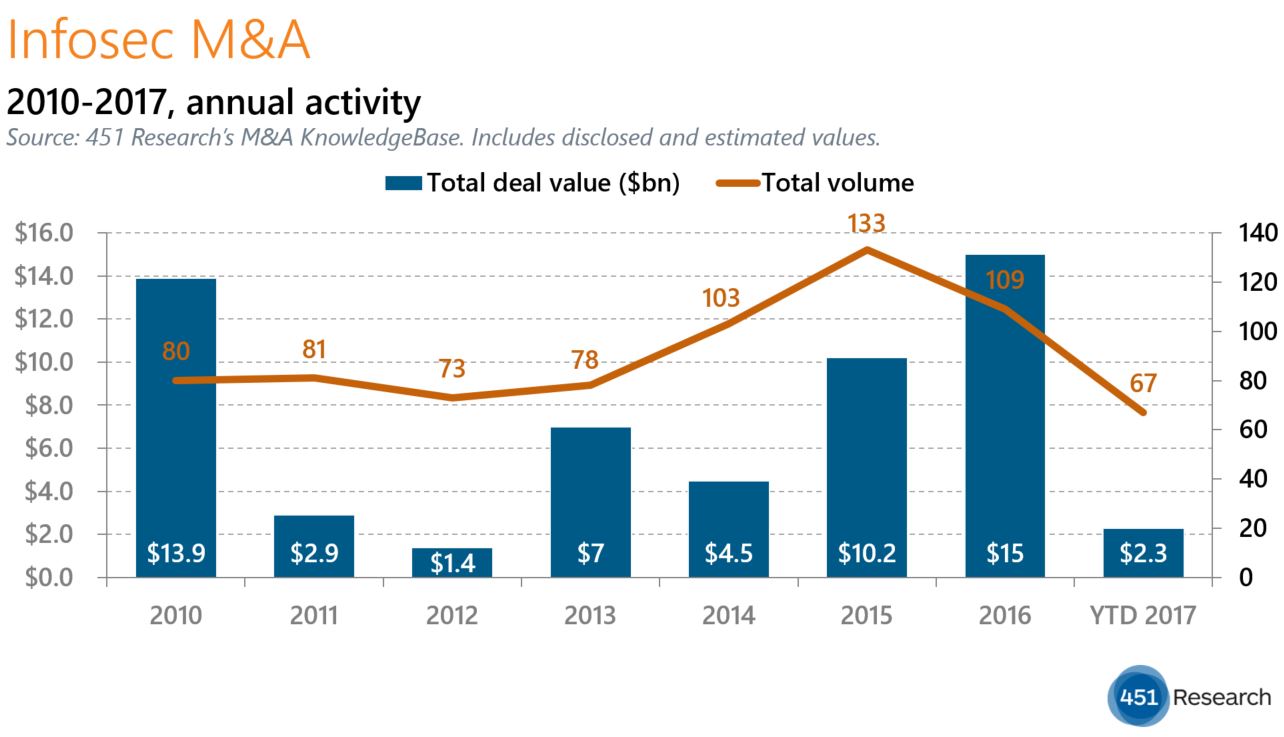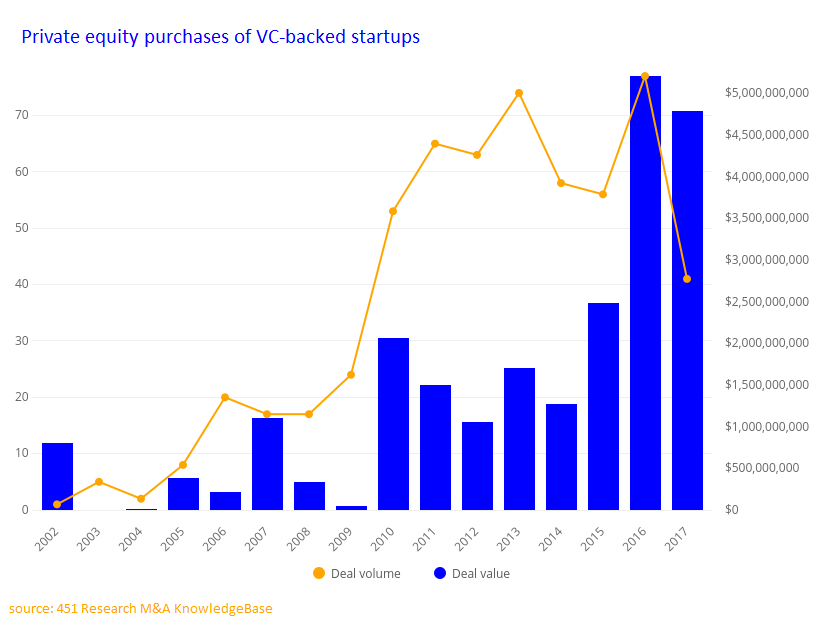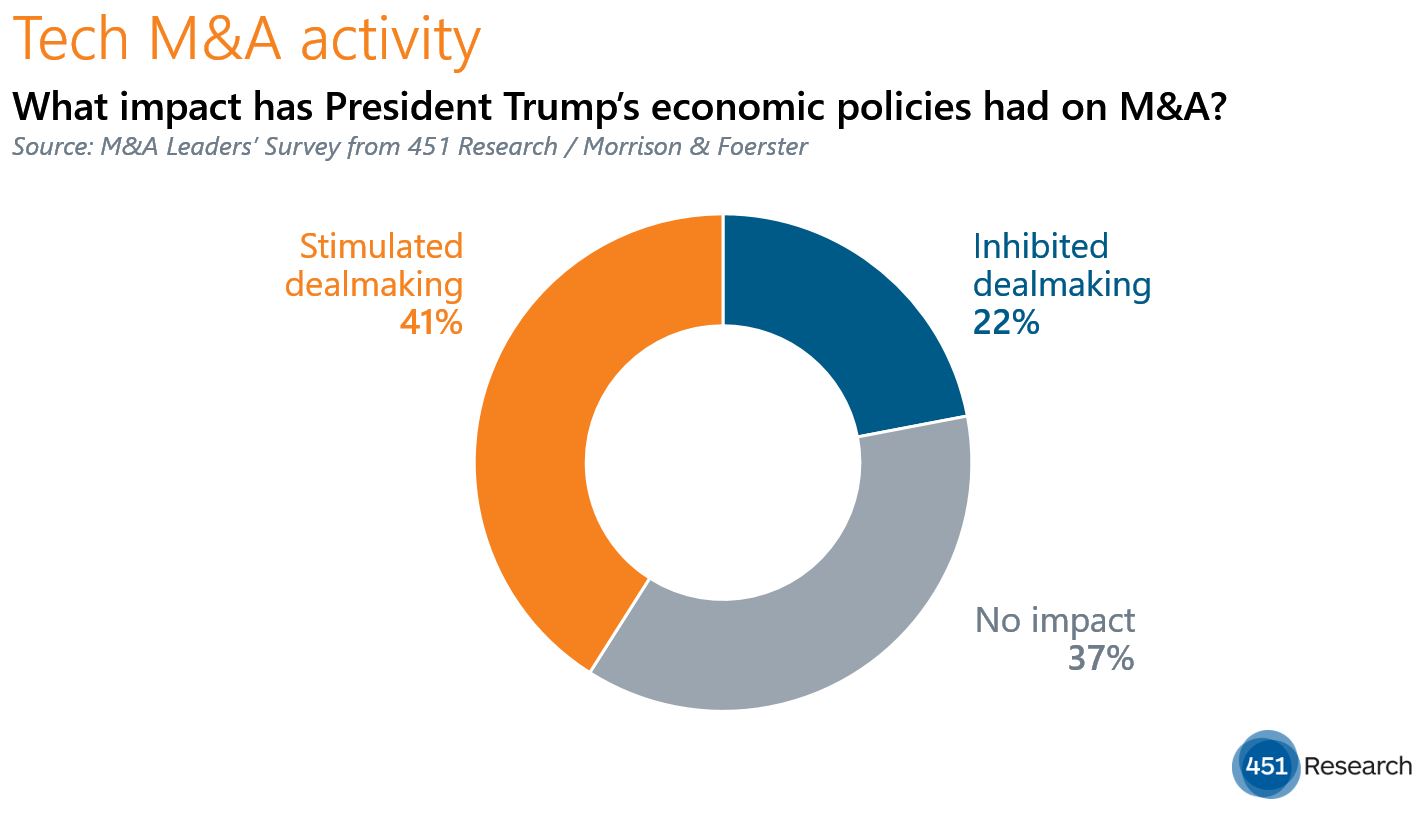Contact: Brenon Daly
For tech M&A in August, there was one big print and then everything else. The blockbuster transaction, which saw Vantiv pay $10.4bn for UK-based rival payments processor WorldPay Group, accounted for almost half of the $22.7bn spent on tech deals around the globe this month, according to 451 Research’s M&A KnowledgeBase.
After the massive fintech consolidation, however, the value of transactions declined sharply. No other deal announced in August figures into the M&A KnowledgeBase’s list of the 25 largest transactions announced in the first eight months of 2017.
The slowdown at the top end of the tech M&A market pushed this month’s spending level to the lowest total for the month of August since 2013. More recently, the value of deals in August came in slightly below the average monthly spending so far this year.
Altogether, tech acquirers across the globe have spent just less than $200bn so far this year, according to the M&A KnowledgeBase. At this point in both 2016 and 2015, spending on transactions had already topped $300bn.
With eight months now in the books, 2017 is on pace for the lowest level of M&A spending in four years. The main reason for the slumping deal value is that many of the tech industry’s most-active acquirers have largely moved to the sidelines, especially when it comes to big prints. IBM, Hewlett Packard Enterprise and Oracle all went print-less in August.
In contrast, the rivals to those strategic buyers, private equity (PE) firms, continued their shopping spree. PE shops announced 77 deals in August, an average of almost four each business day. That brings the total PE transactions announced this year to 600, a pace that puts 2017 on pace to smash last year’s record number of deals by roughly 30%. (For more on the record-setting activity of buyout shops, be sure to join 451 Research for a webinar next Thursday, September 7, at 1:00pm ET. Registration is available here.)



